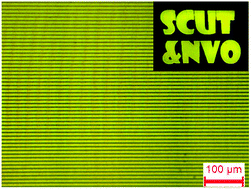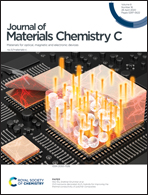Electrochemical polymerization: an emerging approach for fabricating high-quality luminescent films and super-resolution OLEDs
Abstract
Currently, the fabrication of high-resolution OLEDs has many limitations. Electrochemical polymerization is an efficient way to fabricate conducting polymer films. However, the control of the structures and dedoping of films are difficult, thus making the films rough and incompatible with flat-panel devices. In this review, the molecular design and fabrication of high-quality electrochemical polymerization films and super-resolution RGB displays are introduced. Inspired by the unique electrochemical features of N-alkyl carbazoles, highly luminescent precursors are designed with spatially separated emissive cores and side carbazoles. Films with low doping levels, high luminescence efficiencies and smooth morphology are prepared by optimizing the potential windows, electrolyte solutions, scan rates and post-washing process. The luminous efficiency of OLEDs with films as light-emitting layers exceeds that of most OLEDs prepared by conventional methods. Then, electrocopolymerization and multilayer electropolymerization techniques have been developed, in which the components and thickness of the films can be precisely controlled, endowing the films and OLEDs with superior stability. Finally, RGB active-matrix OLEDs and super-resolution displays of 2822 ppi are achieved. The above-mentioned observations demonstrate that electrochemical polymerization is an emerging technique in RGB super-resolution displays and has great commercial potential.



 Please wait while we load your content...
Please wait while we load your content...